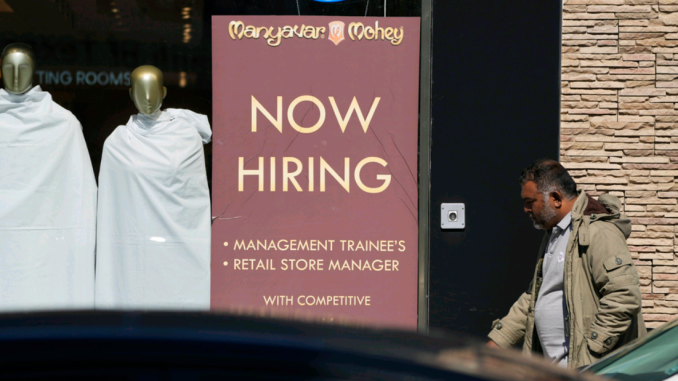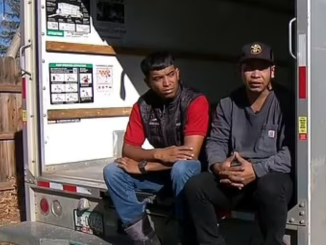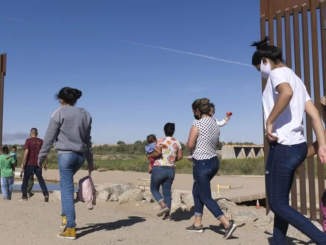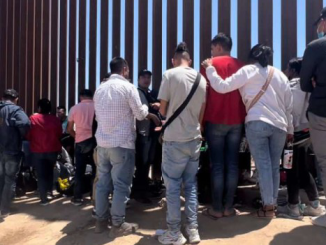
A less-publicized aspect, however, is that nearly all of recent job growth has been by the foreign-born. Jobs held by native-born Americans decreased by nearly half a million between January and February of this year, while jobs held by foreign-born Americans (both legal and illegal immigrants) spiked to 1.16 million.
Looking further back, since January 2020 — just before the pandemic — there has been no growth in native-held jobs, while jobs for foreign-born employees have skyrocketed by more than 3.9 million.
The numbers, flagged in a much-viewed thread on X by Zero Hedge and confirmed by the Sun, have sparked concerns and outrage that the foreign-born are taking jobs from Americans.
{snip}
“The reason why the native-born employment has not increased since January 2020 is because there aren’t more working age people coming into the labor force,” he says. “It’s entirely unsurprising we haven’t seen some big surge in native-born employment over the past four years, because we’re not producing as many people who are working age as we used to,” he says, adding that its instead a “predictable consequence” of declining birth rates and a high number of retirees.
Given the state of the economy, Mr. Bier says he isn’t surprised that immigrants are flocking to take jobs that aren’t being filled by people born abroad.
The native-born workforce participation rate of 61.6 percent is also less than the foreign-born participation rate of 66.6 percent, which is also “entirely explicable” by the age differences in the two populations, he says.
{snip}
“The formal legal immigration system is very inflexible. So it’s difficult to get more workers out of a system that’s capped and limited by certain categories to such a great extent,” Mr. Bier notes. Chaos at the border and the perception that immigrants are taking jobs and public benefits can inspire people to look for an easy fix to immigration, he adds.
“My view is that people look at these problems, and they think it’s just a matter of passing a law or regulation or changing some policy, and then people will stop coming,” he says. “It’s going to require a lot more effort and expenditure to shut off immigration than it is to make it orderly, legal, and beneficial to the country by directing them into jobs and ways to contribute economically to the country.”
Most Americans would rather see immigrants working than “sitting around” and taking benefits, but most immigrants aren’t allowed to work until they achieve some sort of legal status, he says.
The growth in foreign-born employees — signaling that America is attracting a work force from across the world who are expanding economic growth even further — shows that the economy is doing well, he adds.
“It’s a good thing for the immigrants, but it’s also a good thing for us as consumers who are benefiting from the goods and services that these people are producing,”
{snip}
Yet, the skyrocketing number of foreign-born employees — whether they’re here legally or not — is sparking concerns that the influx of immigrant labor is directly harming working Americans.
The number of foreign-born employees has skyrocketed since 2000, the Institute for Sound Public Policy’s executive director, Kevin Lynn, tells the Sun. A big chunk of that, he says, has resulted from the Immigration Reform Act of 1990, which brought about the H-1B visa program.
“Unfortunately for American STEM workers,” Mr. Lynn says, the Act “massively expanded immigration, legal immigration, and science, technology, engineering, math jobs in academia and industry actually saw wage depression and working conditions deteriorate because of this influx of cheap foreign guest workers.”
Some employers are actively firing staff while still filing labor condition applications, which is how businesses can bring in H1-B visa employees, he adds. “Two weeks ago was the filing deadline for the next fiscal year round of H-1B visa workers, so 85,000 more workers are coming into this environment,” Mr. Lynn says.
Regardless of if the immigrants arriving have college degrees, are in the trades, or are manual laborers, he says, the influx can hurt working Americans.
“If there is a group of people of immigrants — legal or illegal — coming in and flooding a sector, that sector is going to experience lower wages, worse working conditions, fewer benefits, and more job insecurity,” Mr. Lynn says.
{snip}
Visa programs are beneficial, he says, but before offering jobs to people born abroad, “we need to ensure that American citizens get the first chance to fill those,” he says.
Ultimately, the labor force data is one piece of a larger, national conversation around immigration. “The situation that’s occurring at the border is not good for the United States, it does not secure us, it does not keep us safe. We are a country of immigrants,” Mr. Fabbricatore says, but they should be vetted.
“I want them to come into the United States, be able to get into a job that that we’re looking for them to fill, so that they can give back to our country, be able to pay their taxes, be able to raise their kids and not be a drain on our society, where our taxes continue to go up, our services are lowered down because we have people going to emergency rooms and filling schools that weren’t ready for hundreds of more people to all of a sudden show up,” Mr. Fabbricatore says. “We’re seeing a lot of that and we’re kind of in this chaos loop right now.”


